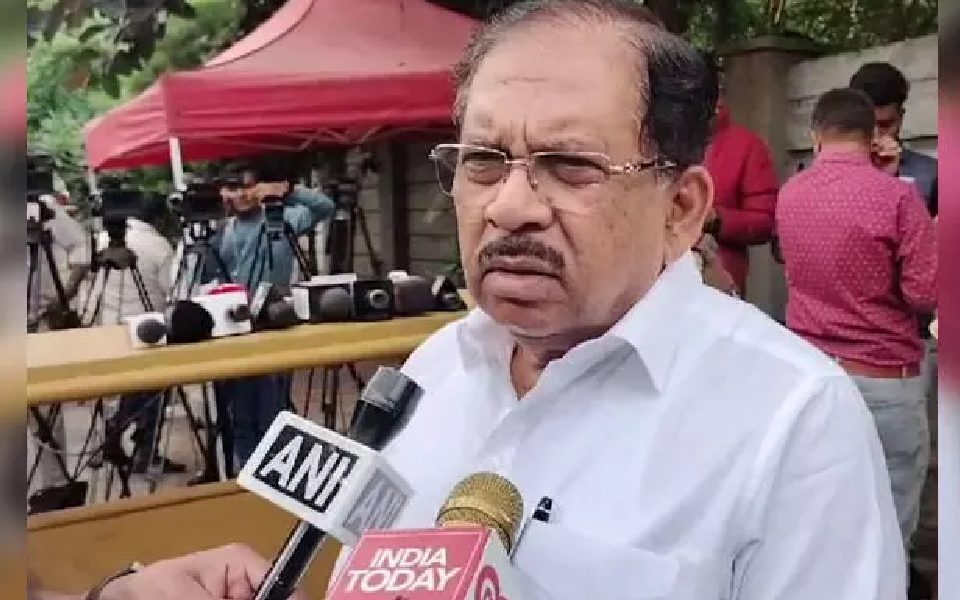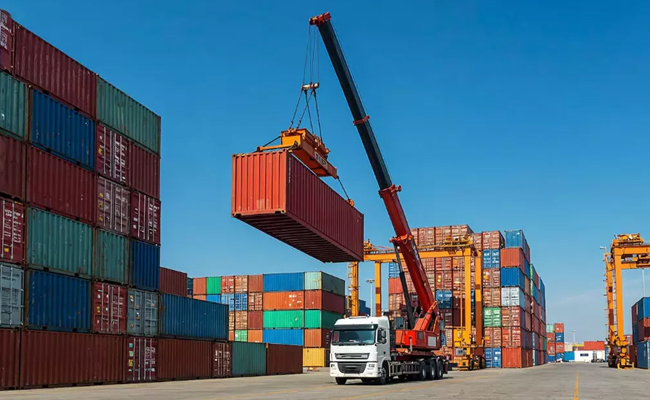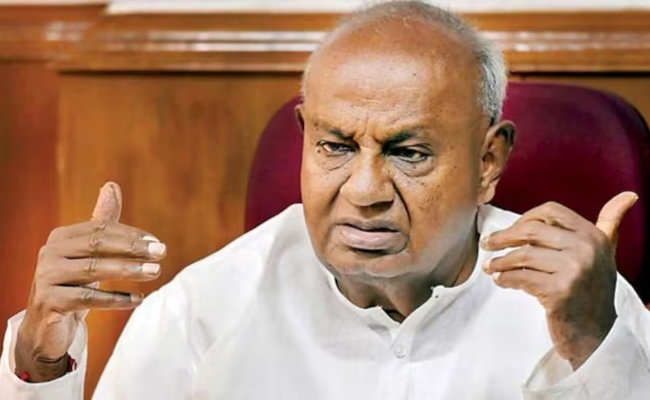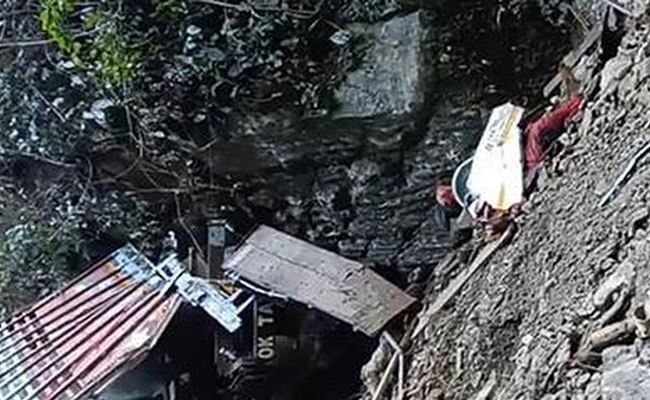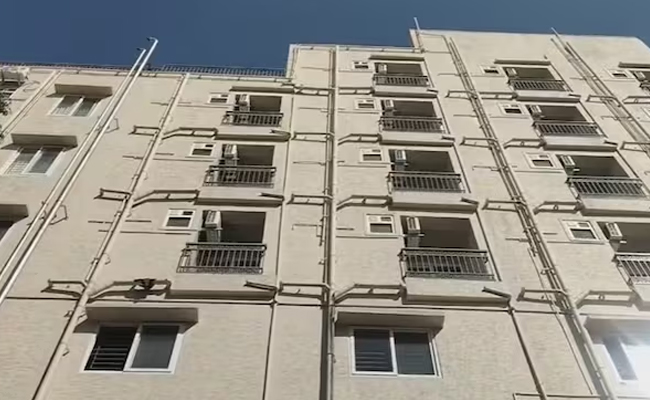Ramanagara: Dr G Parameshwar accused the BJP of intimidating the State government, elected with 136 seats by the people, through the Governor. He was addressing 'Janandolan', a program organized by Congress to protest against injustice to the state by NDA, and against the irregularities during BJP and JDS tenure, at Bidadi on Friday.
"We faced the Vidhan Sabha elections under the leadership of KPCC President D K Shivakumar and Siddaramaiah. If the people removed the corrupt BJP government from power and elected us, we promised to provide them a rule of social justice. We had also assured five guarantees to uplift poor, downtrodden and minorities. But BJP had criticized this by saying that Congress was issuing empty promises. Irrigation projects, road development and all other works are being implemented properly. So BJP and JDS are making non-existent accusations", he said.
Parameshwar alleged that H D Kumaraswamy, after allying with BJP, had hit a jackpot and became a union minister. Citing JDS breaking its alliance with Congress after 14 months to form a government in the state, the Home Minister said that Kumaraswamy would abandon BJP too. He gave the example of BJP-JDS differences about the padayatra against MUDA scam and prophesied that their alliance wouldn't last long.
ALSO READ: Governor's notice illegal, murder of Constitution, destruction of democracy: Siddaramaiah
"They are levelling allegations against a site, purchased in 1935, which was turned into sites by MUDA. BJP must provide evidence of a single file in which Siddaramaiah has signed or any directions given by him [regarding the sites]. We have organized the meeting to tell the truth to people. We will provide a list of irregularities that happened in the time of BJP rule. Let them give a similar list, if possible", he challenged.
Referring to various irregularities under BJP rule, Parameshwar cited BJP legislator Basangouda Patil Yatnal's accusation about the then Health Minister Sudhakar embezzling four thousand crore rupees in COVID medications provided to the public, Goolihatti Shekhar's accusations about 47 crore misappropriated in Bhovi Corporation and D S Veerayya withdrawing money, sanctioned for Devaraja Aras truck terminal, through a cheque to build a house. He questioned that if the BJP people had any shame for levelling allegations against Siddaramaiah after looting thousands of crores from the government.
"On July 26, T J Abraham had given a complaint to the Governor. Chief Secretary of the government had provided a proper answer to the Governor regarding this. But you intimidate us immediately? And give us a show-cause notice, unheard of in history? What you are doing is a mistake. The cabinet ministry has decided for the notice to be revoked. No one in the government has committed a mistake. We will provide a blameless rule for the next four years too and save our word to the people", he said.
Dy CM Shivakumar also launched a tirade against the opposition in the 'Janandolan' meeting.
Minister Zameer Ahmed, Dr M C Sudhakar and many other senior congress leaders were present.
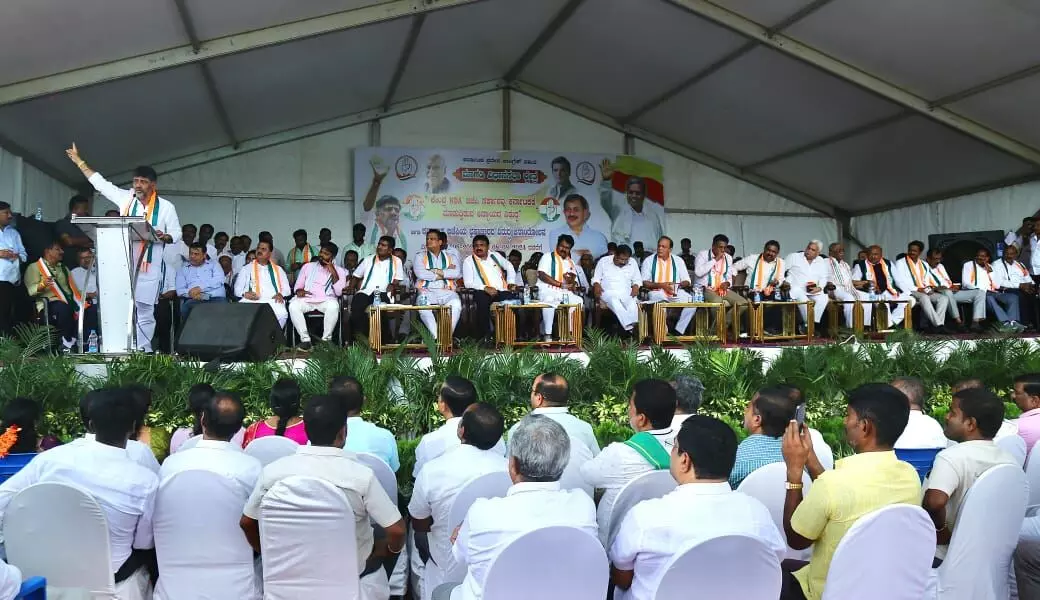
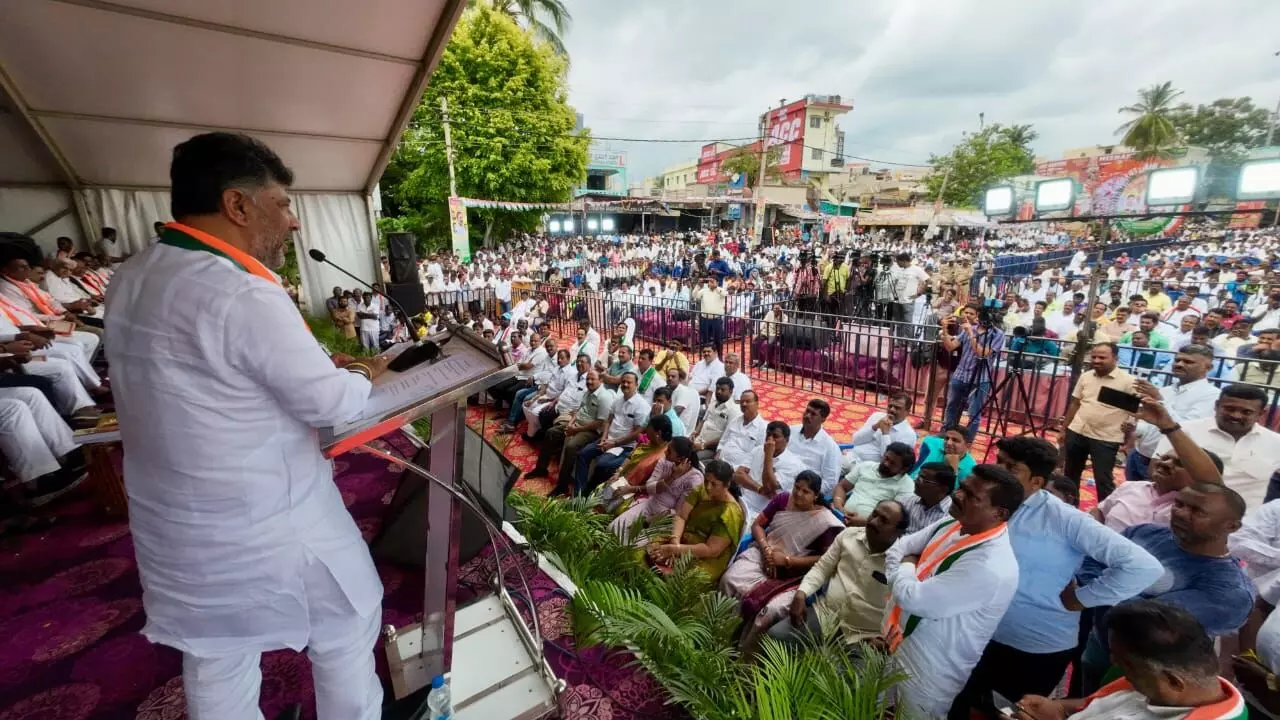
Let the Truth be known. If you read VB and like VB, please be a VB Supporter and Help us deliver the Truth to one and all.
New Delhi (PTI): India has proposed a preferential trade agreement (PTA) with Mexico to help domestic exporters deal with the steep tariffs announced by the South American country, a top government official said on Monday.
Mexico has decided to impose steep import tariffs - ranging from about 5 per cent to as high as 50 per cent on a wide range of goods (about 1,463 tariff lines) from countries that do not have free trade agreements with Mexico, including India, China, South Korea, Thailand and Indonesia.
Commerce Secretary Rajesh Agrawal said that India has engaged with the country on the issue.
"Technical level talks are on...The only fast way forward is to try to get a preferential trade agreement (PTA) because an FTA (free trade agreement) will take a lot of time. So we are trying to see what can be a good way forward," he told reporters here.
While in an FTA two trading partners either significantly reduce or eliminate import duties on maximum number of goods traded between them, in a PTA, duties are cut or removed on a limited number of products.
Trading partners of Mexico cannot file a compliant against the decision on imposing high tariffs as they are WTO (World Trade Organisation) compatible.
The duties are within their bound rates, he said, adding that their primary target was not India.
"We have proposed a PTA because its a WTO-compatible way forward... we can do a PTA and try to get concessions that are required for Indian supply chains and similarly offer them concessions where they have export interests in India," Agrawal said.
ALSO READ: Mexico's Congress approves higher tariffs on goods from India, China and non-FTA nations
Citing support for local production and correction of trade imbalances, Mexico has approved an increase in MFN (most favoured nation) import tariffs (5-50 per cent) with effect from January 1, 2026 on 1,455 tariff lines (or product categories) within the WTO framework, targeting non-FTA partners.
Preliminary estimates suggest that this affects India's around USD 2 billion exports to Mexico particularly -- automobile, two-wheelers, auto parts, textiles, iron and steel, plastics, leather and footwear.
The measure is also aimed at curbing Chinese imports.
India-Mexico merchandise trade totalled USD 8.74 billion in 2024, with exports USD 5.73 billion, imports USD 3.01 billion, and a trade surplus of USD 2.72 billion.
The government has been continuously and comprehensively assessing Mexico's tariff revisions since the issue emerged, engaging stakeholders, safeguarding the interests of Indian exporters, and pursuing constructive dialogue to ensure a stable trade environment benefiting businesses and consumers in both countries.
ALSO READ: Search operation ends in Anjaw truck accident, 20 bodies recovered
Federation of Indian Export Organisations (FIEO) Director General Ajay Sahai has said that Mexico's decision is a matter of concern, particularly for sectors like automobiles and auto components, machinery, electrical and electronics, organic chemicals, pharmaceuticals, textiles, and plastics.
"Such steep duties will erode our competitiveness and risk, disrupting supply chains that have taken years to develop," Sahai said, adding that this development also underlines the little urgency for India and Mexico to fast-track a comprehensive trade agreement.
Domestic auto component manufacturers will face enhanced cost pressures with Mexico hiking duties on Indian imports, according to industry body ACMA.

